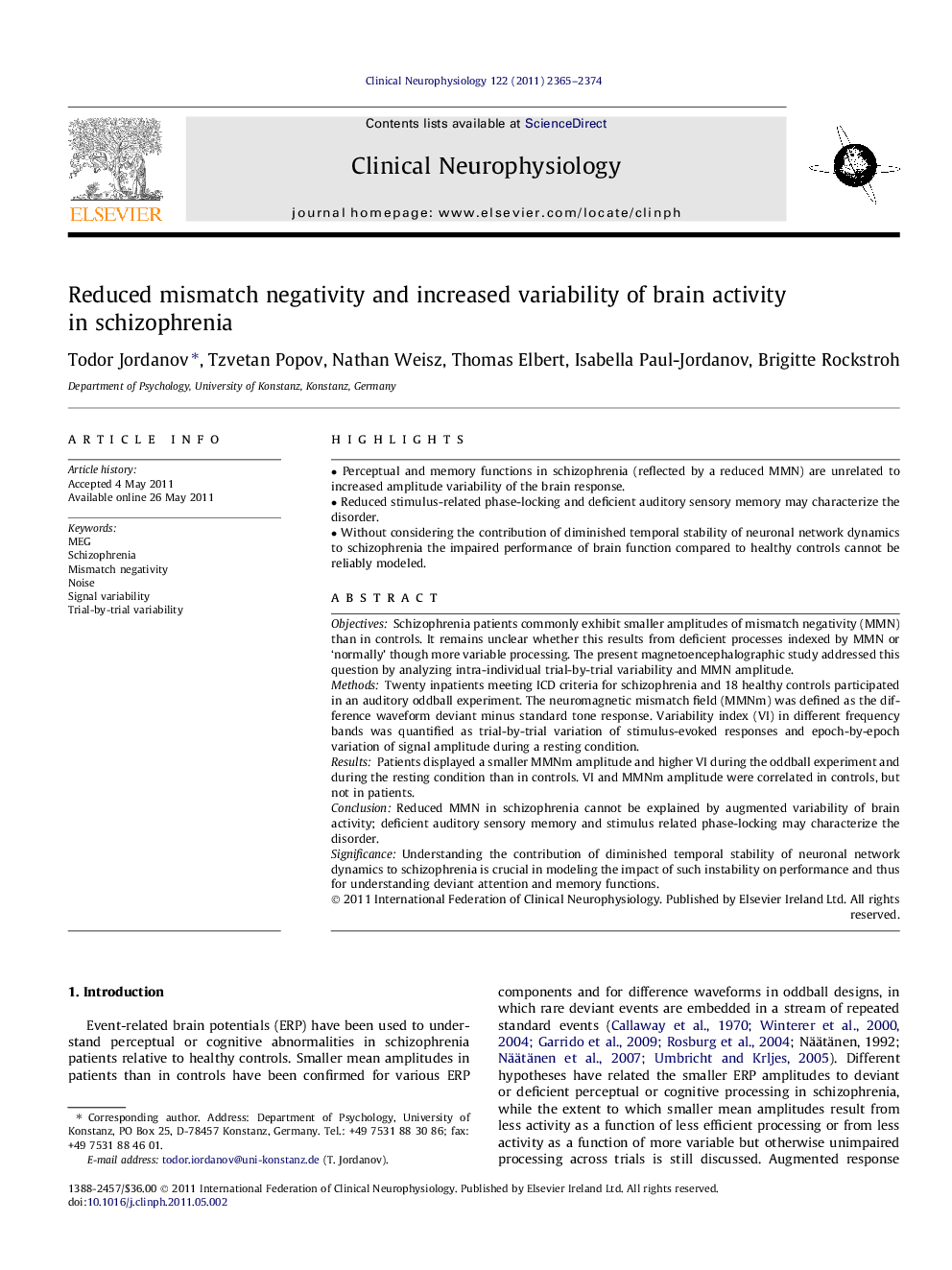| Article ID | Journal | Published Year | Pages | File Type |
|---|---|---|---|---|
| 3043972 | Clinical Neurophysiology | 2011 | 10 Pages |
ObjectivesSchizophrenia patients commonly exhibit smaller amplitudes of mismatch negativity (MMN) than in controls. It remains unclear whether this results from deficient processes indexed by MMN or ‘normally’ though more variable processing. The present magnetoencephalographic study addressed this question by analyzing intra-individual trial-by-trial variability and MMN amplitude.MethodsTwenty inpatients meeting ICD criteria for schizophrenia and 18 healthy controls participated in an auditory oddball experiment. The neuromagnetic mismatch field (MMNm) was defined as the difference waveform deviant minus standard tone response. Variability index (VI) in different frequency bands was quantified as trial-by-trial variation of stimulus-evoked responses and epoch-by-epoch variation of signal amplitude during a resting condition.ResultsPatients displayed a smaller MMNm amplitude and higher VI during the oddball experiment and during the resting condition than in controls. VI and MMNm amplitude were correlated in controls, but not in patients.ConclusionReduced MMN in schizophrenia cannot be explained by augmented variability of brain activity; deficient auditory sensory memory and stimulus related phase-locking may characterize the disorder.SignificanceUnderstanding the contribution of diminished temporal stability of neuronal network dynamics to schizophrenia is crucial in modeling the impact of such instability on performance and thus for understanding deviant attention and memory functions.
► Perceptual and memory functions in schizophrenia (reflected by a reduced MMN) are unrelated to increased amplitude variability of the brain response. ► Reduced stimulus-related phase-locking and deficient auditory sensory memory may characterize the disorder. ► Without considering the contribution of diminished temporal stability of neuronal network dynamics to schizophrenia the impaired performance of brain function compared to healthy controls cannot be reliably modeled.
